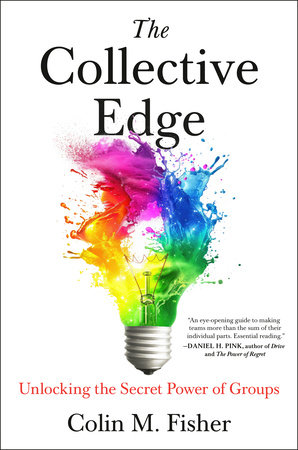How to Foster Civil Discourse in the Classroom
Using the Science of Group Dynamics to Help Your Students Disagree Well
By Colin M. Fisher, professor at University College London and author of The Collective Edge: Unlocking the Secret Power of Groups
Universities were once celebrated as places where ideas could be challenged, debated, and refined. Classrooms were meant to be arenas for civil discourse—spaces where disagreement was not only tolerated but valued.
Yet that ideal is under strain. Divisions between social and political groups have deepened, and polarization—especially in the US—has reached historic levels. Many instructors now hesitate to invite disagreement for fear that conversations will spiral into conflict. But learning depends on dialogue. And dialogue depends on difference.
My new book, The Collective Edge: Unlocking the Secret Power of Groups, explores the psychological and social forces that shape how we live and work together—and why it’s so hard to cooperate or listen across divides. Drawing on The Collective Edge, here are four strategies to help students practice the art of disagreeing well.
- Make Constructive Disagreement a Goal
A class in which everyone agrees all the time isn’t a productive learning environment. Groups that avoid conflict may appear harmonious, but they learn little. As Stanford professor Kathleen Eisenhardt and her colleagues once wrote, “The absence of conflict is not harmony—it’s apathy.”
Tell your students: I value disagreement. That’s where learning happens. True discovery comes from engaging different viewpoints and uncovering what each person knows that others don’t.
- Reframe Debate as Discourse
We often call classroom discussions “debates.” But debate implies a contest: you versus me or us versus them. That framing primes students to defend their side rather than explore new ground. Think about televised political debates—when was the last time a participant said, “You know, you have a good point. You’ve convinced me!”
Discourse, by contrast, reframes the goal. It becomes us against the problem. Instructors and students alike are coinvestigators seeking truth together. When the purpose shifts from winning to understanding, people listen differently. Learning means being willing to change our minds when presented with better ideas. Encourage students to listen to understand, not to refute.
- Build a Culture of Psychological Safety
Students will only take intellectual risks if they feel socially safe. Psychological safety is the belief that you can ask questions, voice disagreement, or admit to mistakes without fear of ridicule or ostracism. Ironically, classrooms that sound the most polite may lack psychological safety.
Instructors play an important role. To foster psychological safety in your classroom, admit when you’re uncertain. Thank students who challenge assumptions. Praise those who raise uncomfortable questions. And ask for feedback on the subtle cues—facial expressions, tone, interruptions—that might unintentionally discourage openness. When instructors model vulnerability, students mirror it.
- Analyze Contrasting Perspectives
Disagreement can’t emerge if students only encounter one way of thinking. Research shows that comparing perspectives deepens learning.
Instructors can design ways to expose students to different perspectives. For instance, you can assign materials that take opposing stances and ask students to identify where ideas clash—and how they might be reconciled. Role-play also helps: Have students analyze cases from different positions (e.g., the CEO, the middle manager, the frontline worker). These exercises shift the focus from defending opinions to understanding the sources of disagreement. Disagreement becomes an act of inquiry and a skill that students can hone.
In today’s polarized environment, encouraging disagreement can feel risky. But avoiding it is riskier still. When we sidestep conflict, we deprive students of a vital civic skill—the ability to engage across difference without disengaging from one another.
By structuring classroom discussions with care, modeling intellectual humility, and celebrating curiosity over certainty, we can make disagreement productive again. Students won’t just learn to argue better; they’ll learn to listen better. That’s not only how learning happens—it’s equipping them with the tools to improve the world.






